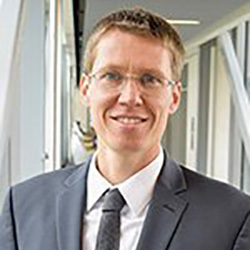Mitja Trkov, Ph.D.
Mitja Trkov, Ph.D.
Mitja Trkov, Ph.D.
Associate Professor; Graduate Program Chair
Biography
Personal Gender Pronoun: He/Him/His
Education:
Postdoctoral Researcher, Mechanical Engineering, University of Utah
Ph.D., Mechanical and Aerospace Engineering, Rutgers University
B.S., Mechanical Engineering, University of Ljubljana, Slovenia
Impactful Research Areas:
![]() Health
Health
![]() Biomedical
Biomedical![]() Connectivity
Connectivity
![]() Sensors & Robotics
Sensors & Robotics
Research Expertise:
Wearable Robotics; Physical Human-Machine Interactions; Biomechanics; Ergonomics; Soft Robotics;
My research focuses on robotics and human-machine interactions in biomedical applications. I use analytical and experimental approaches that integrate dynamics and control, mathematical modeling, and use of experimental platforms with human subject testing to develop new principles and tools. These principles are applicable for robotic applications in autonomous systems, soft robotics, rehabilitation and biomedical engineering.
Professional Memberships:
IEEE (Institute of Electrical and Electronics Engineers)
ASME (American Society of Mechanical Engineers)
